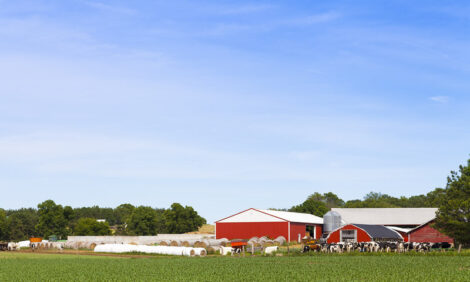



What Are the Benefits of Using Rolling Herd Averages to Manage Your Dairy?
Dairymen in the US are being told of the merits of rolling herd averages as an assessment of recent performance.Rolling herd averages however will not hold the key to the future of the next lactation, warns the Dairy Records Management team in Raleigh North Carolina.
Rolling herd averages represent how much milk, milk fat and milk protein were produced by the average cow in a herd for the previous year. As such, these values re? ect what has happened in the herd but not what production is or future production will be.
On the second page of the DHI-202 sheet, these values are listed for the current and previous test days for the past 365 days.
Calculating the Rolling Herd Average for Milk
The rolling herd average for milk production represents the average amount of milk produced by the average cow in the herd for the last 365 days. This value represents production not only for the days the average cow was in milk but also when she was dry. Cows that leave the herd also have their production data included in this value for the number of days they were in the herd during this yearly period. For new herds on test, rolling herd averages are not calculated until the herd has completed 365 days on test.
To calculate a rolling herd average, the computation ?rst calculates the test interval for each test day during the previous year. The test day interval is de?ned as the number of days from the day after the previous test day through (and including) the current test day.
For example, from the test day of Jan. 9 until the next test day on Feb. 14, the test day interval would be 36 days. The total cow-days per test interval are calculated next to re? ect the total number of cows in the herd. Milking and dry cows are included, with each cow having one day counted for each day she is in the herd during the test interval.
For cows that have left the herd, the number of cow-days they were in the herd for this test period is calculated and included in the calculation of total cow-days for this test period. For each cow in the herd, her total milk production per test interval is calculated.
For the ?rst half of a test day interval, a cow’s daily milk production is represented by the yield from the previous test day. For the second half of the test day interval, daily milk production is represented by the yield recorded on the current test day.
Thus, for the test day interval, her total milk production is the product of the previous test day yield (say, 60 pounds) times one-half the number of days in the test interval (18 for the example above) added to the product of the current test day yield (say, 70 pounds) multiplied by one half the number of days in the test interval (18 for the example above). This would give a total of 2,340 pounds of milk [(18 days X 60 pounds milk) + (18 days X 70 pounds milk) = 2,340 pounds milk for the test period for one cow].
Total yearly production for the herd is calculated by adding the production for all cows in the herd during the test day intervals within the last 365 days.
If the last test day interval results in more than 365 days of production data, the number of days is adjusted to 365 by removing the current days in the interval in
excess of 365.
Finally, to calculate the rolling herd average seen on the DHI-202 sheet, total yearly production for the herd is divided by the total yearly cow-days. This result then is multiplied by 365 to obtain the yearly rolling herd average for the average cow in the herd.
The yearly rolling herd averages for fat and protein are calculated similarly to the rolling herd average for milk production.
Importance and Use of Rolling Herd Averages
Rolling herd averages for milk production, fat and protein are not adjusted for age, stage of lactation, number of dry cows or the length of the dry period.
As such, long dry periods can decrease the rolling herd average because these cows are not contributing milk to the yearly average production during this time frame but still are having cow-days counted. In addition, a high percentage of ?rst-calf heifers in the herd(assuming they have lower production than the mature cows) could reduce the rolling herd average.
The biggest limitation in using the values for rolling herd averages to manage your dairy operation is the fact that they represent the historical or previous effects of management practices. These values can be used to tell how well your dairy herd has done but not how well your cows will milk in the future.
Noticing positive and negative changes early, and detecting subtle changes shortly after they occur and incorporating corrective management practices quickly (or continuing positive changes) is critical.
To manage and evaluate what is happening in your dairy herd, Standardized 150-day Milk is a better measure of production changes in your herd. Applying corrective measures shortly after problems occur can resolve problems quickly so they have a minimal impact on production and pro? tability of the dairy herd.


